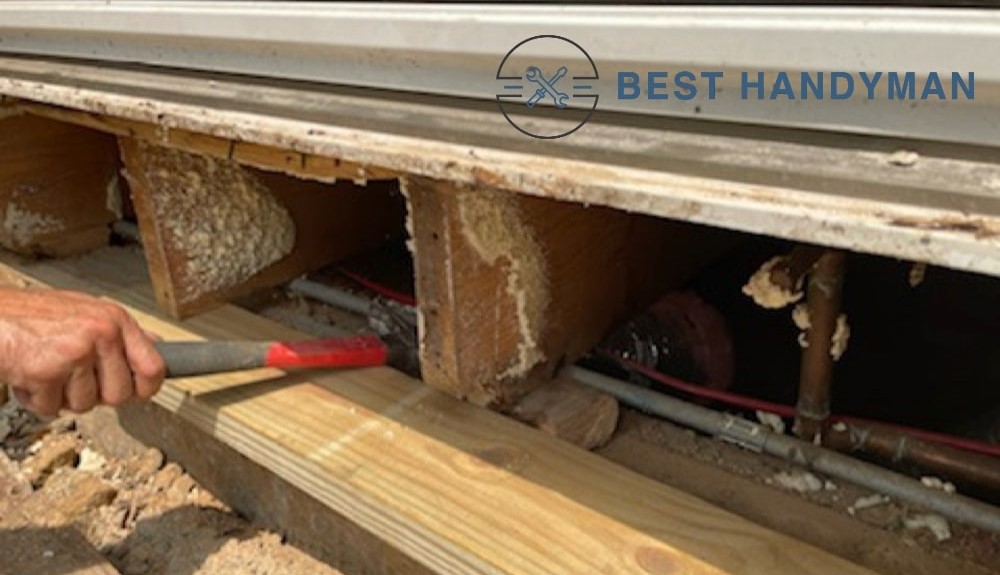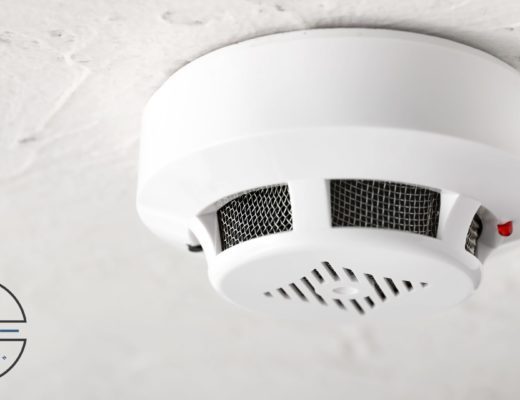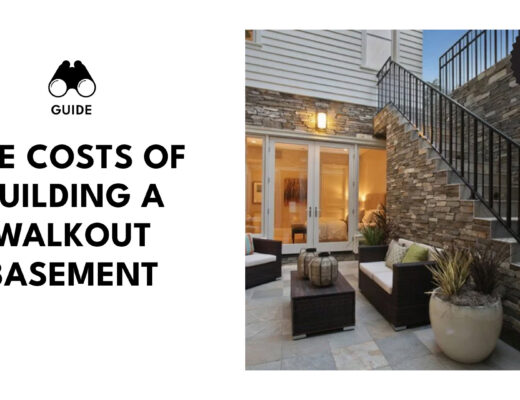When it comes to maintaining the structure of your home, the sill plate and rim joists are very essential components that support your house and ensure its stability.
If you’ve noticed signs of rot or damage in these critical areas, it’s crucial to address the issue immediately.
In this comprehensive guide, we’ll walk you through the key steps and tips for effectively replacing a rotted sill plate and rim joist.
Why Inspect and Replace Your Sill Plate
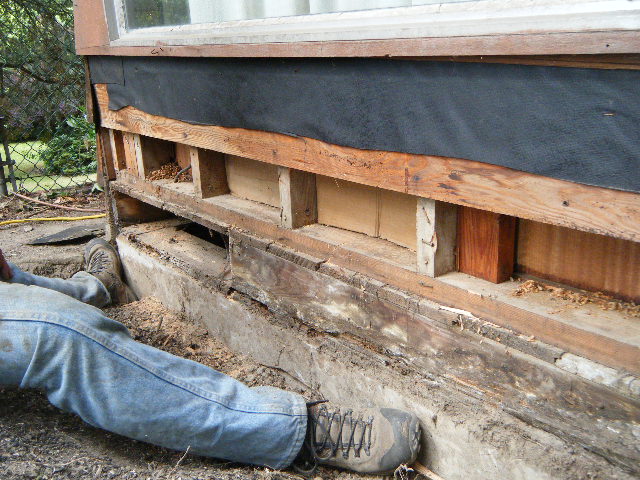
Inspecting and replacing your sill plate are very important tasks that directly impact the stability and longevity of your home. The sill plate and rim joists, although not always visible, are foundational components that provide structural support to your house.
Let’s explore why it’s essential to conduct regular inspections and take immediate action to replace a rotted sill plate:
- Preserving Structural Stability: The sill plate and rim joists form the base upon which your entire home rests. They distribute the weight of the structure and its occupants to ensure stability.
Over time, these components can deteriorate due to various factors, including moisture, pests, and wear. Regular inspections help identify any weakening or damage that might compromise the overall stability of your home.
- Addressing Hidden Issues & Preventing Further Damage: Not all damage to the sill plate is immediately visible. Rot or pest infestations might be occurring out of sight, and the issue could go unnoticed, which may lead to a cascade of problems.
When the foundation of your home is compromised, it can affect other structural elements, such as walls, windows, and doors. Regular inspections, preferably conducted by professionals, help detect these hidden problems early on.
This will enable you to address the issue right away and prevent these problems from spreading and becoming more extensive.
- Avoiding Safety Hazards: A weakened sill plate can pose safety risks to occupants. Uneven floors, sagging walls, and other structural instabilities can lead to accidents, injuries, or even collapse in extreme cases.
Regular inspections and timely replacements ensure that your home remains a safe environment for you and your family.
- Preserving Property Value: Homes with a solid foundation and well-maintained structural components hold their value better over time.
Potential buyers are more likely to be attracted to a home that has undergone regular maintenance, including sill plate replacements if necessary.
- Mitigating Future Costs: While replacing a rotted sill plate involves an initial investment, it’s a cost-effective measure in the long run.
By addressing the problem early, you can prevent the need for more extensive repairs or even complete foundation reconstruction down the line.
- Maintaining Aesthetic Appeal: Structural problems can become visible issues in your home’s appearance.
Crooked windows, sloping floors, and cracking walls can diminish the aesthetic appeal of your living spaces. By replacing a rotted sill plate, you ensure that your home’s exterior and interior maintain their beauty and charm.
Signs of Structural Damage
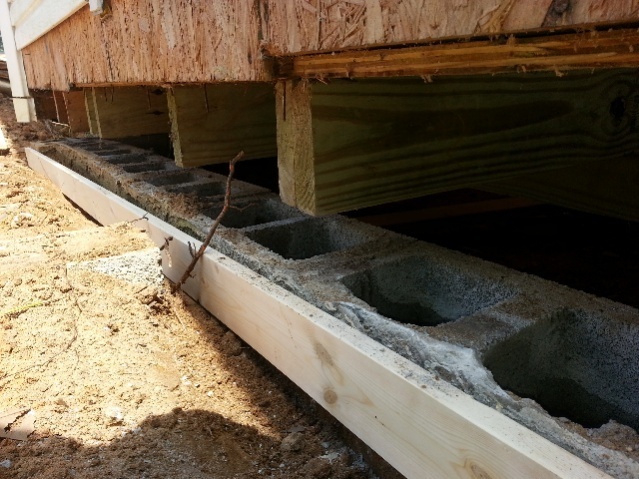
Recognizing the signs of structural damage and rot is very important for maintaining the stability of your home. Let’s explore the key signals that something might be wrong for you to take timely action and prevent more damage to your home:
- Misaligned Siding: Take a look at the walls of your house from the outside.
If the siding looks uneven or not straight, it could be a sign that the sill plate is damaged. When the sill plate is compromised, it can affect how the walls are aligned.
- Sagging Windows: Have you noticed that your windows don’t open or close properly?
If they’re sagging or not fitting well in their frames, this could indicate an issue with the sill plate. A weakened sill plate can lead to an uneven distribution of weight that affects the windows’ alignment.
- Cracked Brickwork: If you have brick walls, check for cracks along the mortar lines.
Cracked brickwork can be a result of an unstable foundation caused by a damaged sill plate. As the foundation shifts, it can put pressure on the bricks, which ultimately leads to cracks.
Subtle Indicators of Rot
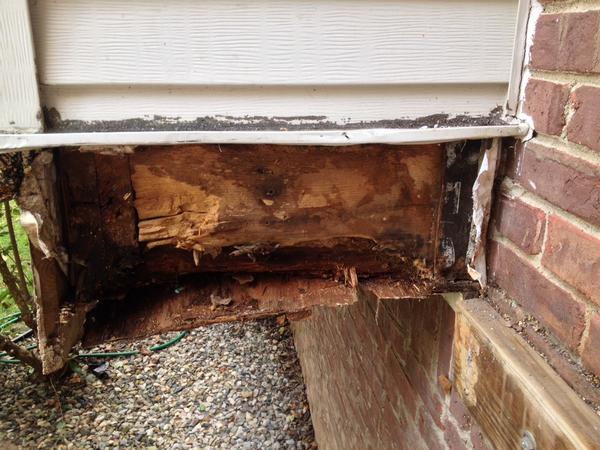
- Musty Odor: A damp, musty smell in your basement or crawl space can indicate that moisture is seeping in. This moisture can lead to rot in the sill plate over time.
Even if you can’t see visible damage, the smell could be a clue.
- Softened Wood: If you press on the sill plate or rim joists and they feel soft or spongy, this is a sign of rot. Healthy wood should feel firm and solid.
Softened wood is a clear indication that there’s a problem with these components that needs to be addressed.
- Insect Activity: Keep an eye out for signs of insect infestation, like sawdust, small holes, or even actual insects in the wood. Certain insects, like termites, are attracted to damp and decaying wood, which can contribute to rot.
Steps to Successfully Replace a Rotted Sill Plate and Rim Joist
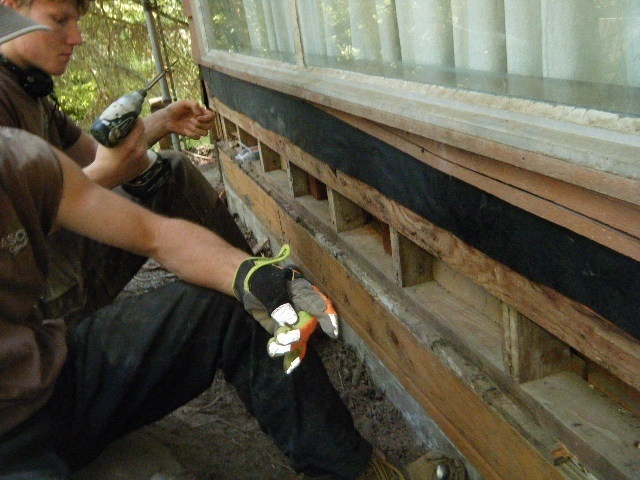
When the foundation of your home is compromised by a rotted sill plate and rim joist, a replacement process is needed. Let us get into the intricate steps that ensure a successful replacement:
1. Seek professional guidance
Replacing a rotted sill plate and rim joist requires more than just tools; it demands the expertise of a structural engineer. Collaborating with these professionals is a cornerstone of success.
Structural engineers possess the knowledge to accurately evaluate the extent of damage and recommend essential steps.
Their guidance helps you avoid making mistakes and saves you from spending a lot of money on things that could go wrong.
2. Understand the causes of damage
As mentioned earlier, sill plates and rim joists don’t deteriorate on their own; a range of factors triggers their damage. Excessive moisture, poor drainage, insect infestations, and even construction oversights can all result in rot.
Looking into these main causes is really important to stop similar problems from happening again after the replacement. When you fix these basic problems, you’re making a foundation that’s not as likely to get damaged in the future.
3. Evaluate repair strategies
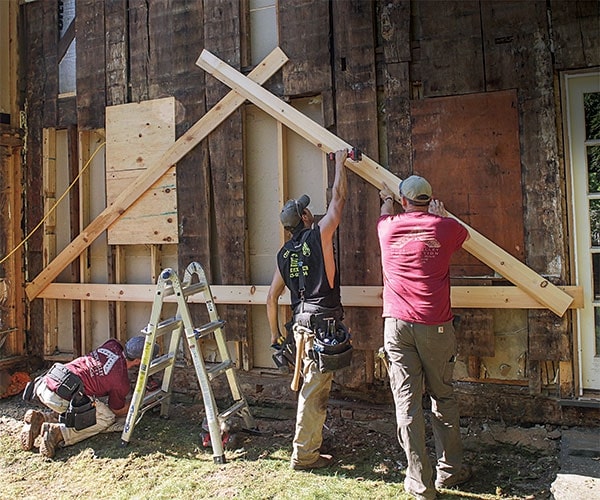
Following the structural engineer’s assessment, getting help from a skilled carpenter or home builder is essential in the next phase. Based on the evaluation, you’ll have a range of options:
- Using a Hydraulic Jack: Lifting the structure with a hydraulic jack to replace the rotted wood
- Building a Stud Wall: Constructing a stud wall to reinforce the vulnerable area and prevent further deterioration
- Combining Approaches: Using a combination of strategies for extensive damage
Your choice dictates the timeline and intricacies of the project.
4. Prioritize careful execution
Precision is very important when replacing a sill plate and rim joist. The process of raising your home with a hydraulic jack is gradual, often progressing at an eighth of an inch per day.
This deliberate approach minimizes the risk of exacerbating the damage and grants access to the rotted wood. Depending on the circumstances, additional jacks may be necessary to ensure stability and safeguard your home’s structure.
5. Comprehensive Repairs
Replacing a rotted sill plate and rim joist means you have to fix all the damage from every angle. This might mean removing compromised flooring, baseboards, and even vertical studs.
Achieving a thorough solution may involve cutting out sections of sheetrock, replacing damaged wood, and installing fresh drywall. This meticulous approach guarantees that the issue is fixed and ensures the solidity of your home.
6. Enhance ventilation
Restoring your home’s foundation involves more than just repairs; it’s an opportunity to optimize its overall health. After replacing the rotted wood, enhancing ventilation is key.
Adequate air circulation is important in preventing future moisture-related complications.
Whether it’s through the addition of extra vent holes or investing in a mechanical air circulation system, proper ventilation maintains a dry and well-maintained foundation beneath your home.
Additional Tips for Maintenance
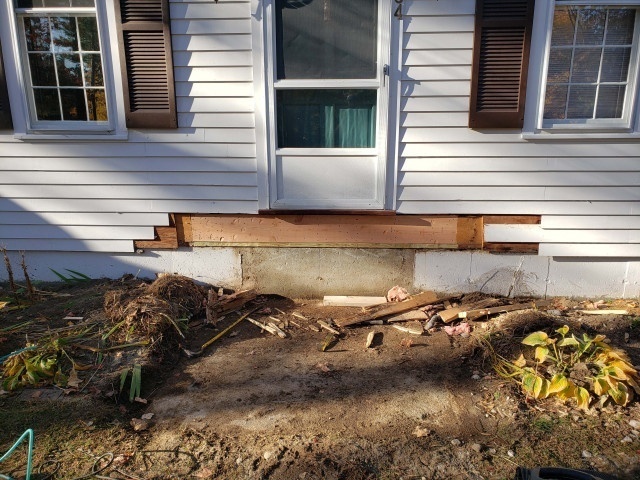
Keeping your home’s foundation in optimal condition goes beyond the replacement of a rotted sill plate and rim joist. Preventive maintenance plays a great role in preserving the longevity and stability of your home.
Here are some valuable tips to help you maintain a solid foundation for years to come.
- Address Insect Infestations: Insects like termites can wreak havoc on your home’s foundation. Schedule annual pest inspections and consider preventive treatments to keep wood-eating insects at bay.
- Maintain Proper Grading: The slope of the ground around your home, known as grading, should direct water away from the foundation.
Ensure that the soil around your home is properly graded to prevent water from pooling near the foundation.
- Monitor and Repair Cracks: Keep an eye on any cracks that appear in your walls, floors, or foundation. Small cracks can indicate underlying issues that need attention.
Repair and seal any cracks to prevent water infiltration.
- Trim Vegetation: Overgrown vegetation near your home can trap moisture against the foundation and create a conducive environment for pests. Trim bushes, trees, and shrubs to maintain a safe distance from the foundation.
- Address Plumbing Issues: Leaking pipes and other plumbing issues can lead to moisture problems in your foundation. Regularly inspect and repair any plumbing leaks to prevent water damage.

